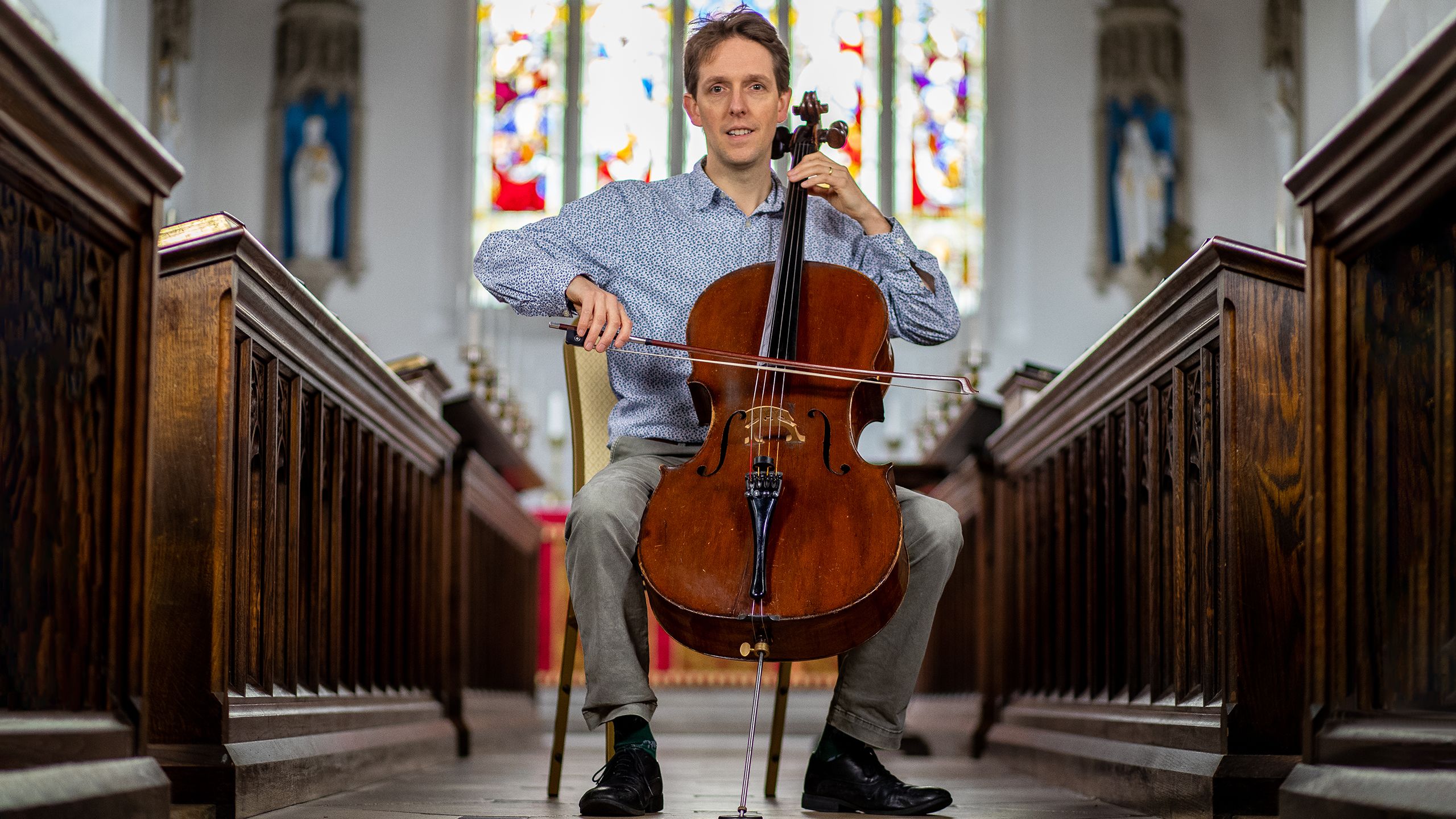This Cambridge Life
The cellist whose Christmas starts in summer

When he’s not running college choirs and keeping the piano tuned as Director of Music for Magdalene and Director of St John’s Voices, Graham Walker sometimes marvels at the wonderful purposelessness of music – and the absolute joy of creating something beautiful, even for a fraction of a second.
It’s the middle of August and while everyone else is on their summer holidays, my mind is on things more festive. I’m planning which songs to sing at the Advent and Christmas carol services for Bridgemas (the ‘Cambridge version’ of Christmas). By the time October rolls around, I’ve dusted down the carol books ready for the first choir practice of the term.
There’s something rather magical about the Advent Carol Service. The chapel is just lit by candlelight, and as the first rather austere notes ring out from the organ, it feels like the wheels of tradition are turning again. There’s a long history of choral music at Cambridge, which I feel privileged to be a part of.
As Director of Music at Magdalene and Director of St John’s Voices, a large part of my job is running the choirs. This involves everything from choosing repertoire, to organising concerts, to keeping the piano tuned. The time I’m actually stood in front of a choir coaching their singing is actually quite small – just from ten past five to quarter past seven.
A love of music has been deep within me for as long as I can remember. I grew up surrounded by music and began playing the piano and cello from an early age, as well as singing as a chorister in the Choir of St John’s College. Later I returned to St John’s as a choral scholar.
As a maths student here, it was those daily choir practices that kept me going when work felt overwhelming. They helped to punctuate the day and gave me an opportunity – in fact a duty – to put down my books, go outside and breathe, see my friends and just lose myself for a couple of hours.
The special thing about music is it’s completely transient. It’s just there for a fraction of a second and then it’s gone – only existing in the memory. It serves no purpose really, in the grand scheme of things, and for that reason it is rather frivolous but utterly wonderful.
Just as music helped me, I know it helps students today. I’ve had many messages from graduates saying that being part of a college choir made all the difference – the support network, the escape from studies, the joy of creating something beautiful.
Classical music had always been what I’d known and felt comfortable with until one day in 1997. I was stopped by another student on the Bridge of Sighs, which connects one part of St John’s with another across the River Cam. He asked if I’d ever played Latin music before and would I give it a go? For want of a good reason to say no, I found myself a few minutes later in the New Music Room, stumbling my way through the Mexican Bolero Besame Mucho.
My very British inability to say no happily led to a collaboration which has been going over 20 years known as Classico Latino. As far as Ivan Guevara (St John's 1996), who is now a good friend, and I are aware, we are the first to pair traditional classical instruments with Latin music in this way.
Even now we still talk about the idea of how cultures can learn from one another when they stand in counterpoint. One music tradition does not impose on the other, rather they inform one another to create something new, which is to the validation of both.
This profile is part of our This Cambridge Life series, which opens a window on to the people that make Cambridge University unique. Cooks, gardeners, students, archivists, professors, alumni: all have a story to share.
Words Charis Goodyear. Photography Nick Saffell.

